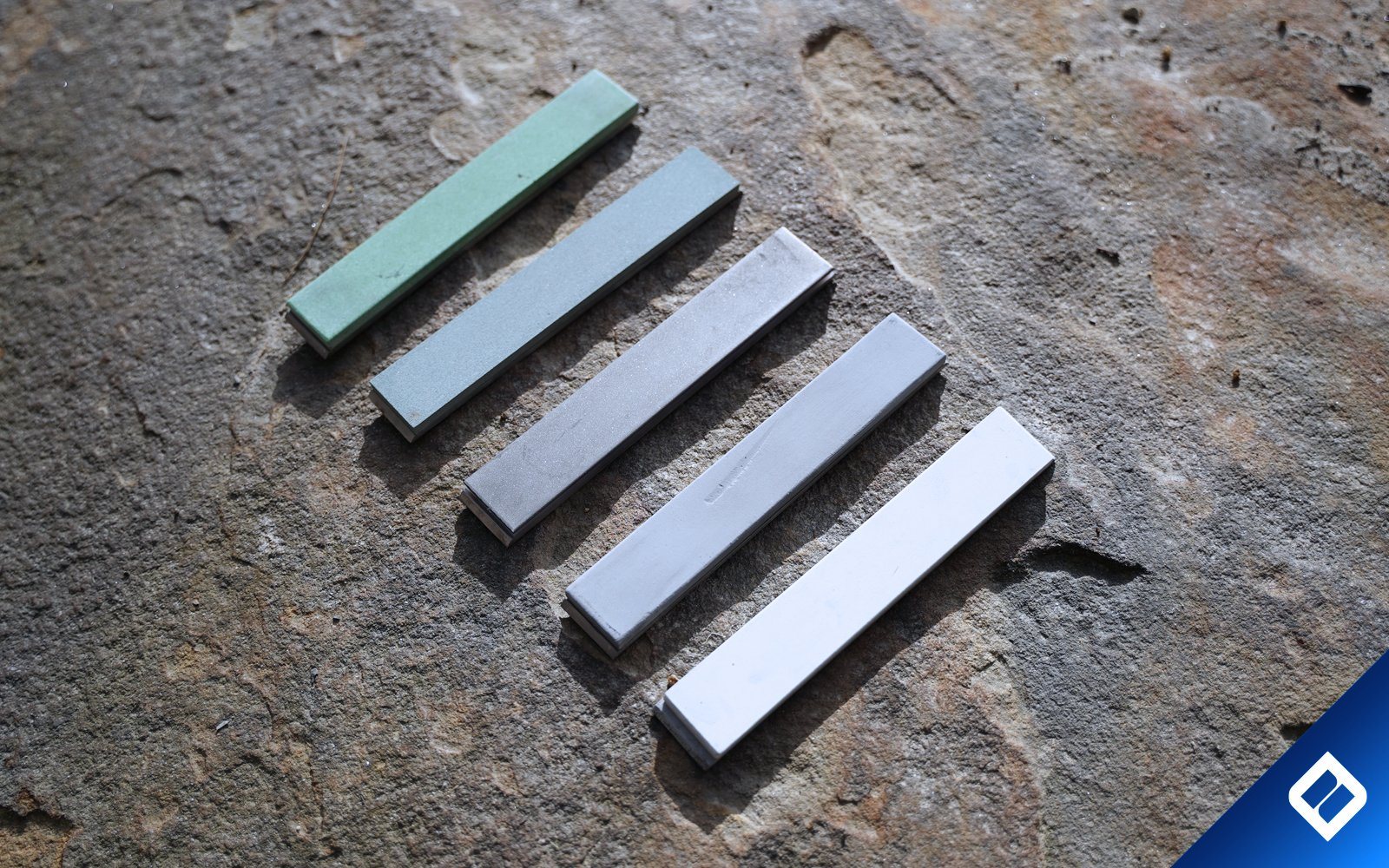Understanding The Key Differences in Stone Materials
There are three common types of sharpening stones, Oil stones, Water stones and Diamond stones / plates. They all have their differences and can each help you achieve your sharpening outcomes.
Water Stones
Water stones are available in natural and synthetic materials. Synthetic are generally made of Aluminium Oxide as the abrasive material. They are often also called ceramic stones in the industry.
Water stones are quick cutting and only require water for clean-up, generally water stones need to be soaked in water for them to absorb it like a sponge.
Popular brands include Shapton and Naniwa Chosera.
An obvious advantage is the water stones use water rather than oil to remove swarf build-up in the stone
Air bubbles are seen when soaking the stones and once the bubbles stop then the stone is ready for use.
Water stones tend to wear at a quicker pace due to how soft the material is and often need to be replaced more often, Water stones end up dishing in the middle and then need to be lapped using a Lapping Plate with lapping powders to flatten the stones as they are used.
Oil Stones
The most traditional oil stones are natural stones made from Novaculite. These natural stones are mined in Arkansas and processed to make what the industry calls Arkansas Stones.
These sharpening stones are separated into different grades related to the density and the finish a stone produces on the blade. The coarsest of them are called Washita.
The finer grades are called Soft Arkansas, Hard Arkansas, Hard Black Arkansas and Hard Translucent Arkansas. These are natural oil stones that can produce a polished edge, but tend to cut at a slower rate than man-made stones. The Hard Black Arkansas and Hard Translucent are more rare and are therefore more expensive.
If you want the fastest cutting oil stones they are made of Silicon Carbide. The silicon carbide stones made by a brand called Norton are called Crystolon stones.
These stones are also labelled fine, medium, and coarse. They are usually grey in colour. While these stones will not produce an edge as fine as the India or natural stones, the fast cutting makes them ideal for initial coarse sharpening. Because they sharpen quickly, it a common practice to use the Coarse Crystolon and then progress to an India Stone and then to finish up on an Arkansas Stone.
Aluminium Oxide stones seem to be a popular choice of sharpeners, Brands like Norton produce stones called India stones, typically these are fast cutting and can produce a high quality edge.
One Disadvantage of oil stones is that they generally gut slower compared to Diamond and Water stones, another is that they are messier to clean up as the residue they leave behind is harder to remove.
Diamond Stones and Plates
There are two main varieties of diamond stones, ones where the surface contains small recessed scallops or holes to capture the swarf residue from the cutting. The other is where the diamonds are continuous across the surface with no scallops to capture any swarf.
Generally these are broken down into two categories, Mono-crystalline and Poly-crystalline Mono-crystalline are more sort after due to their longevity.
Diamonds plates will cut extremely quickly and they will also retain their flatness throughout the life of the plate, except for a resin bonded diamond plate.
There are good reasons why there are different types of sharpening stones available on the market.
There is not one type of stone that is best for everyone. Selecting the right one starts by finding the diamond stone with the best combination of advantages for your particular sharpening needs.
Stones can vary in size from full sized stones right down to stones to suit specific guided sharpening systems like the TSPROF, Hapstone and KME sharpeners, These us special sizes such as 1" x 6" and 1" x 4" with a thickness of about 5mm.
Learn how to sharpen using sharpening stones Here

